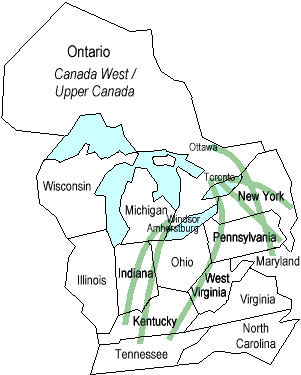The first black slaves were 'introduced' to Canada about 1608 by the French, but the first black slave to arrive in Canada directly from Africa came in 1629.
In 1689 slavery got a "legal foundation" in New France (modern-day Quebec & most of modern-day Ontario at that time) and by 1759 there were close to 4,000 recorded slaves including 'Panis' which were Native Americans of Pawnee descent.
After 1783, when the United Empire Loyalists started migrating from the US, slave population in Canada rapidly increased... but "the total was never high, however, as slavery was generally unsuited to Canadian agriculture or commerce, and most of the Blacks who settled in Nova Scotia immediately followed the American Revolution were free".
On 19 June 1793, Attorney General John White of Upper Canada introduced a bill that probihited the import of slaves into Upper Canada. The bill was passed and Upper Canada became the only British Colony to legislate for abolition of slavery.
In 1790 the Imperial Statue allowed new settlers to Upper Canada to bring slaves but required that the slaves be properly fed and clothed. This statue also ensured the freedom, at the age of twenty-five, of any child born to a slave mother in Upper Canada.By 1800 other British colonies in Canada, excluding New Brunswick and Prince Edward Island (and the island of Cape Breton which was not yet a British colony), followed suit. While slavery in Canada was technically illegal it was not enforced until the British Imperial Act of 1833 abolished slavery throughout the British Empire. While this prevented new slaves being bought, sold, or traded, it did not free those whom were already slaves. The goal was to give those slaves "gradual emancipation".

I'm on my way to Canada
That cold and distant land
The dire effects of slavery
I can no longer stand.
Farewell, old master,
Don't come after me.
I'm on my way to Canada
Where coloured men are free

